Морате бити пријављени да
-
moreX
-
Компоненте
-
-
Category
-
Полупроводници
- диоде
- Тиристори
-
Електро изоловани модули
- Електро изоловани модули | ВИСХАИ (ИР)
- Електро изоловани модули | ИНФИНЕОН (ЕУПЕЦ)
- Електро изоловани модули | Семикрон
- Електро изоловани модули | ПОВЕРЕКС
- Електро изоловани модули | ИКСИС
- Електро изоловани модули | ПОСЕИЦО
- Електро изоловани модули | АББ
- Електро изоловани модули | ТЕЦХСЕМ
- Go to the subcategory
- Мостовни исправљачи
-
Транзистори
- Транзистори | GeneSiC
- SiC MOSFET модули | Mitsubishi
- SiC MOSFET модули | STARPOWER
- АББ СиЦ МОСФЕТ модули
- IGBT модули | MITSUBISHI
- Транзисторски модули | MITSUBISHI
- MOSFET модули | MITSUBISHI
- Транзисторски модули | ABB
- ИГБТ модули | POWEREX
- ИГБТ модули | ИНФИНЕОН (ЕУПЕЦ)
- Silicijum-karbidni poluprovodnički elementi
- Go to the subcategory
- Гате Дриверс
- Блокови напајања
- Go to the subcategory
- Električni pretvarači
-
Пасивне компоненте (кондензатори, отпорници, осигурачи, филтери)
- Otpornici
-
Osigurači
- Minijaturni osigurači za elektronske sisteme serije ABC i AGC
- Cilindrični brzi osigurači
- Osigurači sa odloženim delovanjem GL/GG i AM karakteristika
- Ultra-brzi osigurači
- Brzi osigurači sa britanskim i američkim standardom
- Brzi osigurači sa evropskim standardom
- Vučni osigurači
- Visokonaponski osigurači
- Go to the subcategory
-
Kondenzatori
- Motorni kondenzatori
- Elektrolitski kondenzatori
- Kondenzatori - snubberi
- Energetski kondenzatori
- Kondenzatori za DC kola
- kondenzatori za kompenzaciju snage
- Visokonaponski kondenzatori
- Kondenzatori za indukciono grejanje
- Impulsni kondenzatori
- ДЦ ЛИНК кондензатори
- Кондензатори за АЦ/ДЦ кола
- Go to the subcategory
- EMI filtri
- Superkondenzatori
- Заштита од пренапона
- TEMPEST филтери за откривање емисије
- Одводник пренапона
- Go to the subcategory
-
Releji i kontaktori
- Теорија релеја и склопника
- Trofazni poluprovodnički releji
- Трофазни полупроводнички релеји наизменичне струје
- Регулатори, команде и додаци
- Sistemi za meki sart i reverziblni kontaktori
- Elektromehanički releji
- Kontaktori
- Rotacioni prekidači
-
Једнофазни полупроводнички релеји наизменичне струје
- Једнофазни релеји наизменичне струје, 1 серија | Д2425 | Д2450
- Jednofazni poluvodički izmjenični releji CWA i CWD serije
- Jednofazni poluvodički izmjenični releji CMRA i CMRD serije
- Jednofazni poluvodički izmjenični releji - serija PS
- Двоструки и четвороструки полупроводнички релеји наизменичне струје, серије Д24 Д, ТД24 К, Х12Д48 Д.
- Jednofazni poluvodički releji - gn serije
- Jednofazni kružni releji Ckr serije
- Jednofazni AC poluvodički releji za DIN sabirnice - ERDA I ERAA serija
- 150A AC jednofazni releji
- Čvrsti releji s ugrađenim hladnjakom na šini - ENDA, ERDA1 / ERAA1 series
- Go to the subcategory
- Monofazni poluprovodnički releji za štampane ploče
- Интерфејс релеји
- Go to the subcategory
- Indukcione komponenete
- Radijatori, Varistori, Termička zaštita
- Ventilatori
- Klimatizacija, Pribor za industrijska kućišta, Kuleri
-
Батерије, пуњачи, бафер напајања и претварачи
- Батерије, пуњачи - теоријски опис
- Litijum-jonske baterije. Nestandardne baterije. Sistem za upravljanje baterijom (BMS)
- Baterije
- Punjači i dodaci za baterije
- UPS i puferski izvori napajanja
- Pretvarači i dodaci- fotonaponski
- Складиште енергије
- Гориве ћелије
- Литијум-јонске батерије
- Go to the subcategory
- Automatika
-
Kablovi, Licnaste žice, Kablovski kanali, Fleksibilne veze
- жице
- Кабловски уводи и спојнице
- лицнастим жице
- Каблови за специјалне намене
- схиртс
-
плетенице
- браидс флат
- плетенице коло
- Врло флексибилан плетеница - стан
- Врло флексибилан плетеница - коло
- Бакар плетена цилиндрични
- Бакра плетеница штит и цилиндрични
- Флексибилни уземљење траке
- Плетенице ЦИЛИНДРИЦАЛ поцинковани и нерђајућег челика
- ПВЦ изолацијом бакарне плетенице - Температура 85 ° Ц
- Стан плетени алуминијум
- Цоннецтион Кит - плетенице и цеви
- Go to the subcategory
- Прибор за вучу
- папучица
- Флексибилни исолатед сабирнице
- Вишеслојна флексибилан шина
- системи за управљање кабл
- Go to the subcategory
- View all categories
-
Полупроводници
-
-
- Suppliers
-
Applications
- Automatika industrijska
- CNC alatni strojevi
- DC i izmjenični pogoni (pretvarači)
- Energy bank
- Indukciono grejanje
- Industrijski zaštitni uređaji
- Istraživanje i laboratorijska merenja
- Mašine za sušenje i obradu drveta
- Mašine za termoformiranje
- Merenje i regulacija temperature
- Motori i transformatori
- Oprema i dijelovi za opasna područja (EX)
- Oprema za centrale, kontrolne ormare i telekomunikacije
- Poligrafija
- Rudarstvo, metalurgija i livnica
- Tramvajska i železnička vuča
- UPS i ispravljački sistemi
- Апарати за заваривање и апарати за заваривање
- Индустријска аутоматизација
- ХВАЦ аутоматизација
-
Инсталација
-
-
Индуктори
-
-
Индукциони уређаји
-
-
Услуга
-
- Kontakt
- Zobacz wszystkie kategorie
Tehnologije industrijskog osvetljenja

Industrijsko osvetljenje – značaj i primena
Industrijsko osvetljenje je jedan od najvažnijih elemenata opreme proizvodnih hala, kancelarija, skladišta i radnih mesta mašina. Ono dopunjuje prirodno svetlo, omogućava produženo radno vreme, primenu smenskog rada i pozitivno utiče na zdravlje i vid zaposlenih. Istovremeno, ovaj faktor je toliko očigledan da se često zaboravlja.
Izbor odgovarajućeg osvetljenja za industriju zahteva razmatranje mnogih faktora, uključujući uslove okoline, nivo prirodnog svetla, tip opreme, finansijske zahteve, ciljeve postrojenja, vrstu obavljenog posla i druge.
Industrijsko osvetljenje, pored osvetljavanja proizvodnih hala ili skladišta, uključuje i dodatno osvetljenje, kao što su izlazni putevi, spoljašnje ili perimetralno osvetljenje, kao i osvetljenje za testove ili pojedinačne proizvodne procese. Pravilno osvetljenje povećava efikasnost rada, smanjuje naprezanje očiju i utiče na dobrobit zaposlenih.
Prednosti pravilno odabranog industrijskog osvetljenja
U zavisnosti od željenog efekta i profila postrojenja, različite vrste svetla mogu izazvati različite osećaje – hladno svetlo motiviše na rad, toplo opušta, dok nepravilno odabrana jačina svetla može povećati umor i demotivaciju.
Glavne prednosti industrijskog osvetljenja:
- ušteda troškova održavanja,
- bezbednost osoba, mašina i proizvoda u skladištu,
- smanjenje umora zaposlenih i povećanje efikasnosti rada, koncentracije i budnosti,
- sprečavanje poremećaja cirkadijalnog ritma,
- smanjenje broja nesreća u postrojenju.
Potrošnja energije i bezbednost industrijskog osvetljenja
U velikim, neprekidno radnim skladištima i proizvodnim halama, troškovi osvetljenja i održavanja opreme u ovako energetski zahtevnim pogonima predstavljaju poseban problem.
Načini za smanjenje troškova industrijskog osvetljenja:
- energetski efikasne lampe,
- sistemi za upravljanje osvetljenjem – automatsko isključivanje lampi u praznim prostorijama ili prilagođavanje prirodnom svetlu,
- dimmeri i vremenski prekidači,
- postavljanje odgovarajuće temperature u postrojenju,
- upotreba neodrživog i dugotrajnog osvetljenja.
Korišćenje osvetljenja u industrijskim uslovima povezano je sa nakupljanjem prljavštine i prašine na lampama. U zavisnosti od industrijskog sektora, mogu se pojaviti i opasni elementi kao što su čestice rashladnih tečnosti, ulja, masti, strugotine i varnice. Zato je važno obezbediti odgovarajući stepen zaptivanja i materijal svetiljke, npr. akrilno staklo ili polikarbonat.
Osvetljenje u industrijskom postrojenju – na šta obratiti pažnju
Ključne karakteristike izvora svetla:
- Vreme do postizanja maksimalne svetlosti lampe – od nekoliko sekundi do nekoliko minuta.
- Vreme ponovnog uključivanja – neke lampe moraju da se ohlade pre ponovnog uključivanja.
- Mogućnost dimovanja i pravilno postavljanje lampe – neki tipovi lampi zahtevaju određenu radnu poziciju.
U halama se mogu pojaviti prepreke koje ograničavaju protok svetla. Takođe je važno pravilno rasporediti lampe kako ne bi zaslepljivale zaposlene i ometale rad uređaja. Pogrešno postavljanje može izazvati stroboskopski efekat, što predstavlja opasnost pri radu sa rotirajućim mašinama. Pravilno postavljene lampe povećavaju bezbednost i omogućavaju brzu evakuaciju.
Industrijsko osvetljenje za specijalne primene
Odgovarajuće industrijsko osvetljenje koristi se ne samo za osvetljavanje velikih površina, već i radnih stanica, mašina i opreme, npr.:
- montažne stanice i mašine,
- stanice za kontrolu kvaliteta,
- električni paneli i robotizovane stanice,
- monitoring proizvodnih procesa,
- mesta za održavanje opreme.
Prehrambena industrija
U prehrambenoj industriji najvažniji aspekt osvetljenja je higijena. Lampe moraju biti lako čistive, od nerđajućeg čelika, zaptivene i otporne na hemikalije i jake mlazeve vruće vode pod pritiskom. Takođe, treba da budu izrađene od nerazbijajućih i otpornog materijala na udarce i temperature i da ne utiču na boju hrane. U hemijskim zonama je potrebna otpornost na eksploziju.
Zone sa opasnošću od eksplozije (Ex)
U zonama gde može nastati eksplozivna atmosfera, svetiljke moraju ispunjavati posebne zahteve. Potreban je ATEX sertifikat koji definiše kategoriju uređaja, način zaštite, gas/prašnu grupu i temperaturnu klasu.
Najbolji izvori svetla za industrijsku primenu
Izbor svetlosnog izvora treba razmotriti u skladu sa preporukama EU, koje nalažu upotrebu energetski efikasnih rešenja. U industriji se i dalje koriste starije tehnologije, ali moderni LED-ovi dominiraju.
Vrste svetlosnih izvora:
- termalne lampe – sijalice, halogeni (trenutno zabranjeni u EU),
- pražnjenje lampi – npr. fluorescentne i HID lampe,
- poluprovodnički svetlosni izvori – LED diode.
Prilikom izbora osvetljenja treba uzeti u obzir parametre: svetlosni tok (lm), jačina svetlosti, osvetljenost, luminanciju, trajnost, boju svetla i indeks reprodukcije boja.
LED diode u industriji
LED diode su postale standard u industriji i trgovini. Koriste fenomen elektroluminiscencije, tj. emisiju svetlosti pri prolasku električne struje kroz poluprovodnički spoj.
Prednosti LED-a:
- visoka efikasnost i intenzitet osvetljenja,
- dug vek trajanja čak i pri kontinuiranom radu,
- trenutno osvetljenje po uključivanju,
- nije potrebno hlađenje pre ponovnog uključivanja,
- mogućnost dimovanja i izbora aktivnih dioda,
- otpornost na vibracije i udarce,
- rad na niskim temperaturama,
- smanjenje troškova energije i održavanja,
- mali uticaj na životnu sredinu,
- povećanje bezbednosti i produktivnosti na radnom mestu.
Jedina mana LED-a je osetljivost na visoke temperature, ali dobro dizajnirani sistemi obezbeđuju dug vek trajanja. LED tehnologija može se integrisati sa pametnim sistemima upravljanja osvetljenjem, senzorima dnevnog svetla i daljinskim upravljanjem jačine i vremena rada.
U budućnosti se mogu pojaviti nove tehnologije koje će revolucionisati tržište, ali osvetljenje ostaje ključni element svakodnevnog života – na poslu i kod kuće. Važno je da lampe budu pravilno odabrane, izdržljive i u skladu sa standardima.
Related products
Related posts
 Nanuk protection cases - perfect solution for work in difficult conditions
Nanuk protection cases - perfect solution for work in difficult conditions
 Power supply management
Power supply management
 Wireless communication
Wireless communication

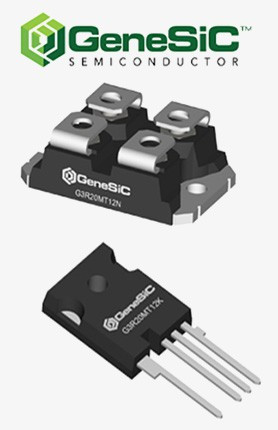
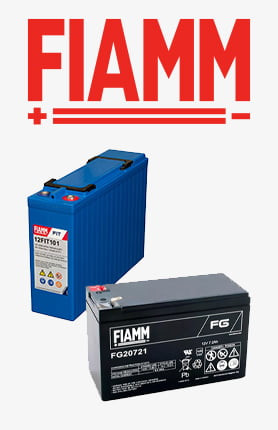
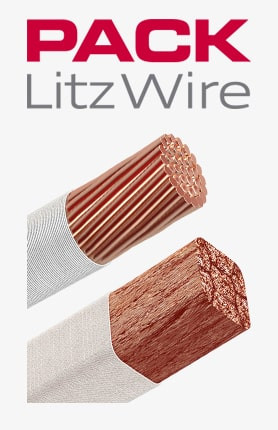
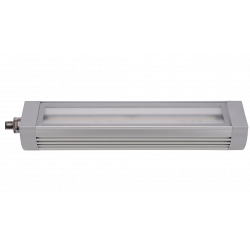
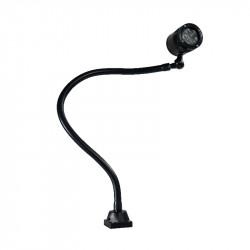
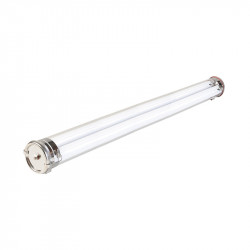
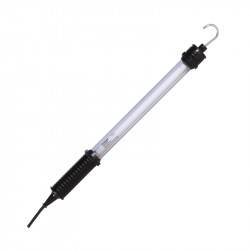
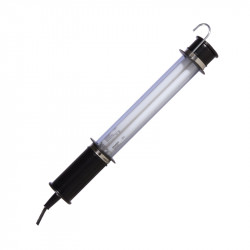
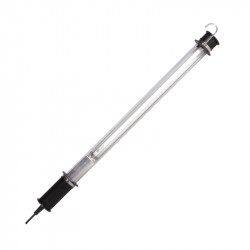
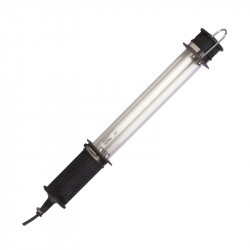
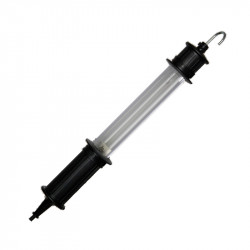
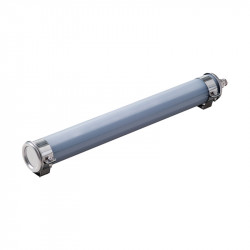
Leave a comment